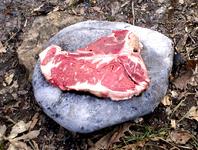 |
| Steak goes on the hot rock. |
|
|
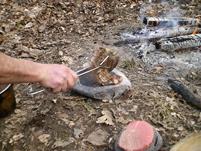 |
| Ready to flip. |
|
|
 |
| Grilling some crawfish too. |
|
|
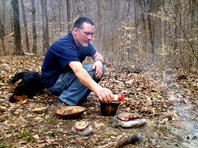 |
| Mark adds a little seasoning, while our dog Gino waits for dinner. |
|
|
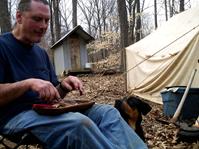 |
| Dinner is served. |
|
|
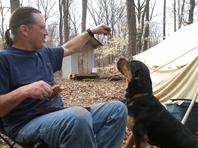 |
| And Gino couldn't be happier. He preferred the steak to the crawfish. |
|
|
Making Maple Syrup and Sugar
|
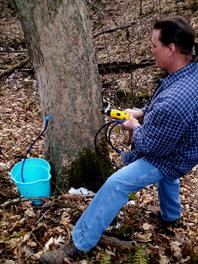 |
| Mark taps our Sugar Maple trees in late winter. |
|
|
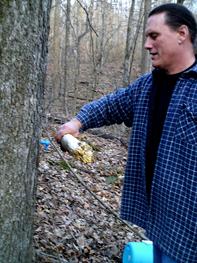 |
| Mark places tap in tree. Each tap can give us a gallon or more of sap a day (when freezing at night and warm in the day). |
|
|
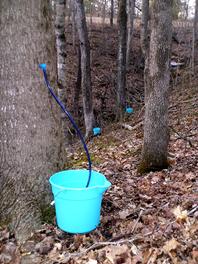 |
| Buckets collect sap from maple trees in our sugar grove. We have only 16-20 taps a year. |
|
|
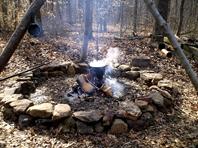 |
| First boiling of maple sap is done outside over an open fire in our backyard. |
|
|
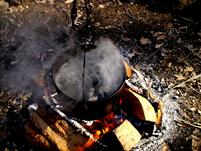 |
| The sap is mainly water that needs to evaporate. Water 40 to syrup 1 ratio (sometimes 50-1 depending on season). |
|
|
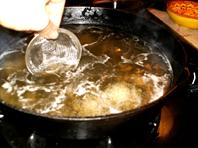 |
| Finishing maple syrup on our kitchen stove. |
|
|
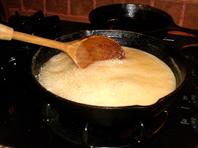 |
| Heating past the syrup stage makes maple granulated and candied sugar. This hot syrup is foaming as the sugar ratio increases. |
|
|
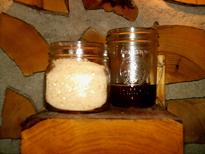 |
| Finished maple syrup and granulated sugar. |
|
|
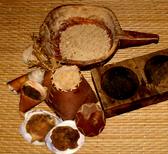 |
| The sugar we make is utilized in our Native Foods Program. Here is granulated sugar in a Northern style makuk, and candied sugar in birch bark cones and shells. |
|
|
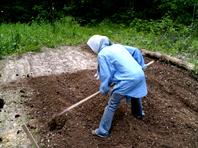 |
| Jessica prepares the soil in the garden area for planting. |
|
|
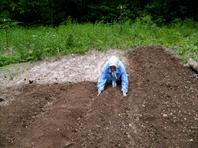 |
| Jessica planting Northern Flint corn. |
|
|
 |
| Young Miami White flour corn. |
|
|
 |
| Miami White flour corn. |
|
|
 |
| We wait until the corn is more dry (not fresh or 'green' corn) before we harvest it. |
|
|
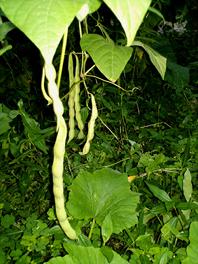 |
| Heritage beans are grown along side of the corn. |
|
|
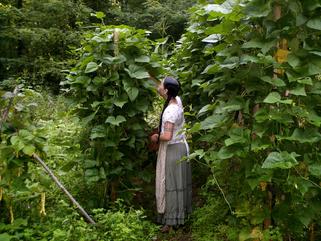 |
| Jessica picks fresh beans in mid August. |
|
|
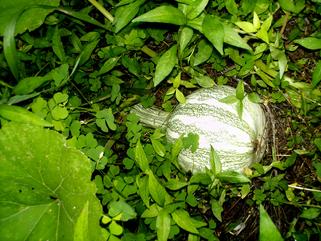 |
| Squash grows in between corn patches. |
|
|
 |
| Small plots of heritage corn next to our house. |
|
|
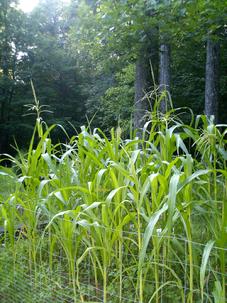 |
| Plot of Delaware Blue corn. |
|
|
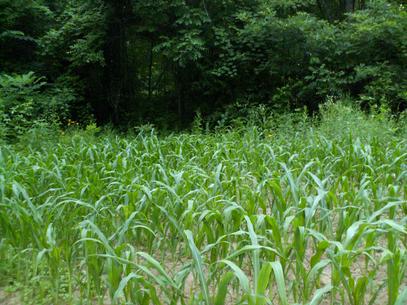 |
| Longfellow Flint corn. |
|
|
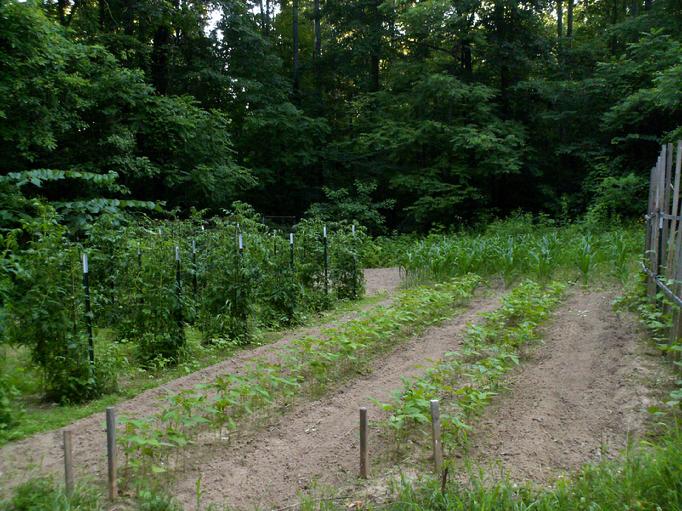 |
| Our upper garden. Tomatoes, bush and pole beans, Longfellow and King Phillip corn grow in this picture. |
|
|
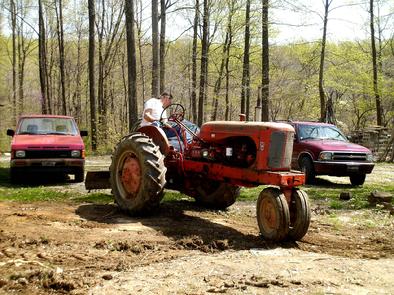 |
| Mark works on leveling a new plot of land near our driveway for garden use. |
|
|
 |
| Gino (front) and Mia (back) help keep critters away from our gardens. |
|
|
Food Preparation and Preservation
|
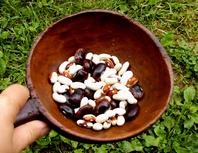 |
| Heritage beans are picked mature and kept dry. These are Seneca, Stuben Yellow Eye, and Soldier Beans. |
|
|
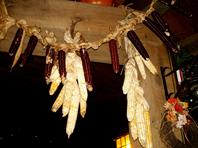 |
| Much of our corn is dried and stored in our home in traditional fashion. |
|
|
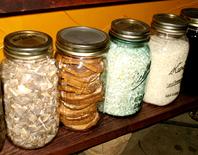 |
| Many of our garden foods are also stored in jars for later use. |
|
|
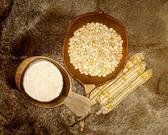 |
| Miami White corn is processed into flour (pictured on left). |
|
|
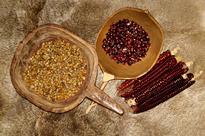 |
| Northern Flint corn is usually processed into hominy (pictured on left). |
|
|
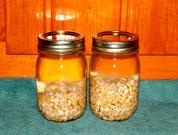 |
| Canned hominy ready to eat. |
|
|
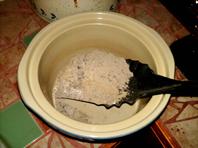 |
| In traditional hominy making, we use hardwood ashes to loosen the hulls. We mix the ashes with warm water and soak the kernals in this solution. |
|
|
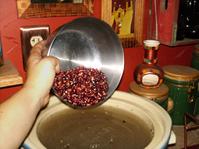 |
| Pouring Flint corn into the ash and water mix. It will soak in the warm liquid for hours until the hulls have fallen off the kernals. |
|
|
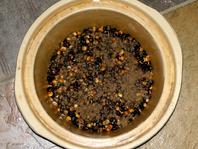 |
| Or instead of heating in a large mixture of water with ashes, the kernals can be coated with liitle water and more ashes. |
|
|
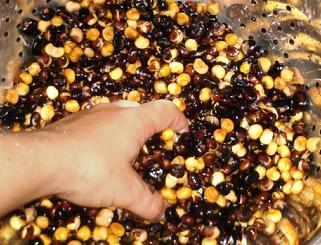 |
| During the first rinsing, about half the hulls have come off the kernals. When the hulls are gone, the corn left behind is yellow because the color of the corn is in the hulls. |
|
|
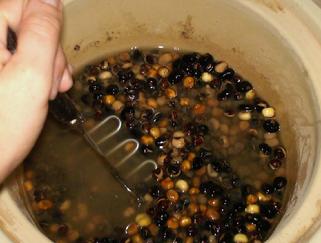 |
| Pounding the kernals can also help to loosen the hulls. This was historically noted as being accomplished by utilizing a wooden mortar and pestle. |
|
|
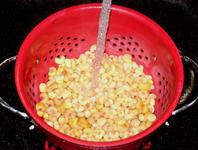 |
| When the hulls are gone, the hominy needs to be rinsed several times. |
|
|
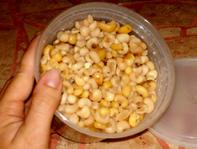 |
| The hominy needs to washed of the ash residues, which in large amounts can be harmful if consumed. Here is rinsed hominy, ready to eat. |
|
|
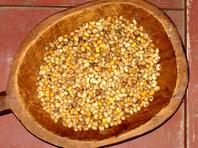 |
| We usually dry or can our hominy for later use. Pictured here is whole kernal hominy dried. |
|
|
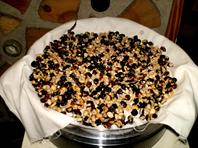 |
| There are other ways to process hominy. We can also stop loosening the hulls half way through the process and lay out the half hulled hominy to dry. |
|
|
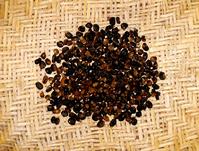 |
| The dried half hulled hominy (pictured above) is then pounded using a mortar and pestle, causing the kernals to crack and the remaining hulls to loosen. |
|
|
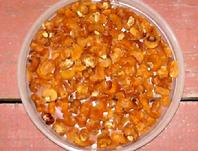 |
| After cracking the kernals and loosening the hulls, they are winnowed to get rid of the hulls. The cracked hominy left behind (pictured above) can be hydrated and consumed as a hominy dish or pounded finer and used as 'grits.' |
|
|
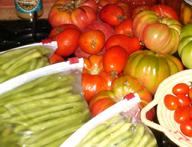 |
| Some of our fresh grown foods for our daily use at home. |
|
|
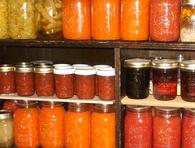 |
| Most of our foods are canned for preservation. |
|
|
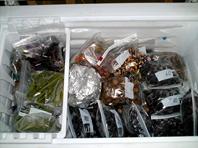 |
| Other foods are kept in the freezer. |
|
|
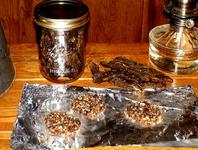 |
| One food item we process at home for our program use is storage meats or jerky (mainly of deer and buffalo). Meat is dryed to store, and hydrated to consume, because this kind of jerky has almost no water content unlike manufactured jerkys, which means it is usually much to hard to eat dry. |
|
|
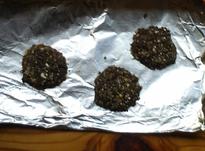 |
| In order to eat the jerky dry, it is usually processed for 'snack' use. These cakes (pictured here) are made from pounded dried buffalo meat mixed with bear oil, corn meal, and crushed bean flour. |
|
|
|
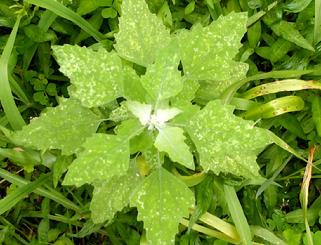 |
| Lamb's Quater (young Goose Foot variety). The leaves are edible, and eaten cooked or raw. |
|
|
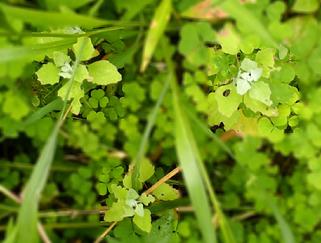 |
| This is an early variety of greens eaten by many Native societies. Mark especially likes to eat this while working in the garden. |
|
|
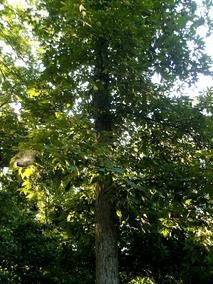 |
| We collect nuts from Shagbark Hickory trees. |
|
|
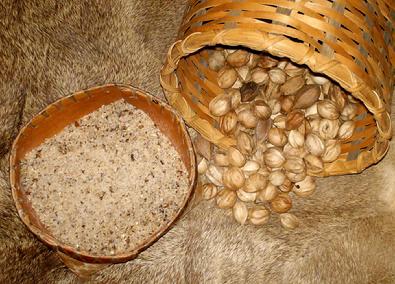 |
| With the nuts from the hickory trees, we make meal, pudding, oil, broth, and a type of historic baby 'formula.' |
|
|
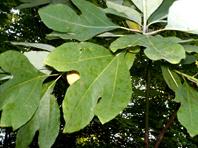 |
| We are very lucky to have property with a good number of sassafras trees. |
|
|
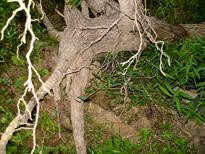 |
| It is the roots of these trees we utilize. |
|
|
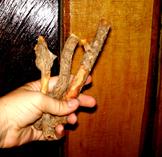 |
| The bark of sassafras roots is used to flavor drinks or make sassafras tea. |
|
|
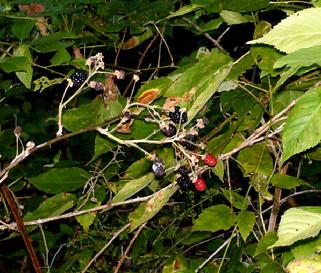 |
| Blackberry bushes grow wild and in abundance around our home. |
|
|
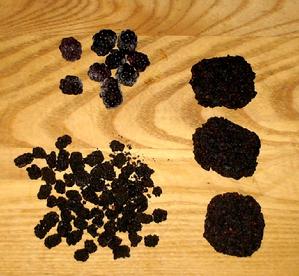 |
| The blacberries are preserved in traditional fashion - dried or fried into a patty. |
|
|
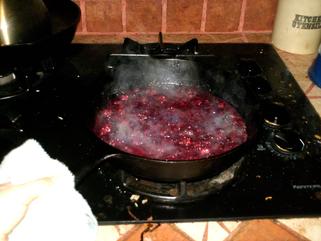 |
| Making blackberry patties by cooking the moisture out of the blackberry mush. |
|
|
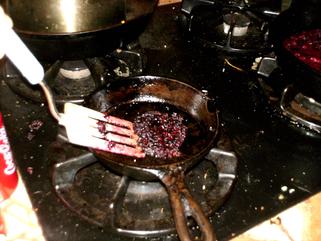 |
| Once the moisture begins to leave, the pulp sticks together which is fried into a patty form to be saved for later use. |
|
|
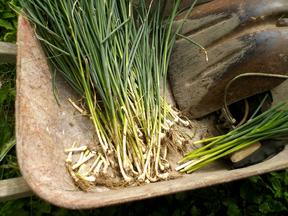 |
| Wild garlics just picked. |
|
|
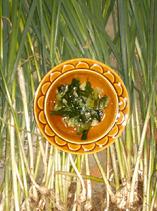 |
| Wild garlics and cooked garlic greens. |
|
|
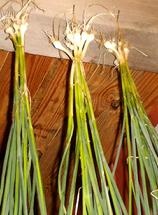 |
| Wild garlics hang to dry. |
|
|
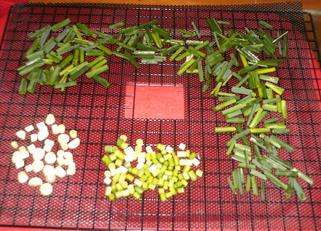 |
| Wild garlics sectioned and drying on a rack. |
|
|
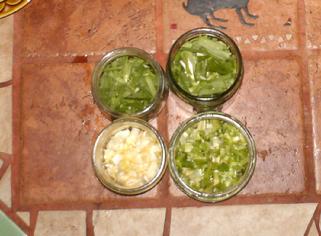 |
| Dried wild garlics in jars. |
|
|
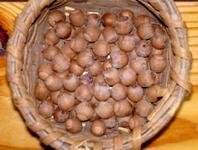 |
| Acorns are edible when processed correctly. The meats must be leached, or boiled and rinsed of the acidity naturally found in the acorns. |
|
|
 |
| Acorn meats that have been boiled and leached. They will be pounded into a meal and rinsed a few more times. |
|
|
|
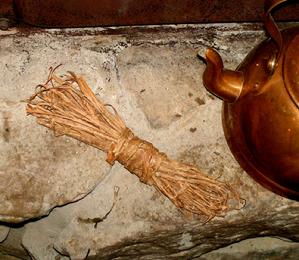 |
| Although not catagorized as a food item, we collect willow bark for its historic use as a medicine. All willows contain salicin, a pain killer. The bark was known to be smoked, chewed, or brewed in a tea for relief of different health problems. |
|
|
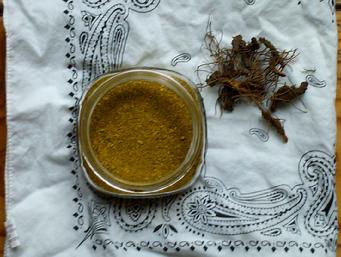 |
| Another example of a medicine plant we usually harvest and keep for our use is yellow root. It happens to grow in abundance around our home. Mark uses yellow root to help heal cuts, which means we have to gather some every year in the Fall. |
|
|
|